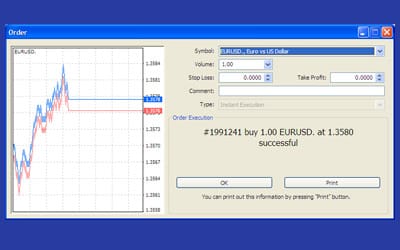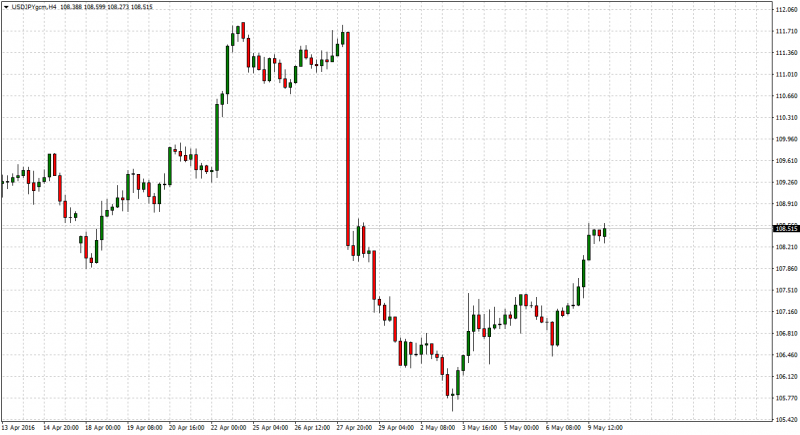This is a guest post by Harry Gozlan, CEO of smartTrade Technologies. Before co-founding smartTrade Technologies, Harry spent 12 years in trading and management activities in the OTC market areas in Brussels, Paris, London and New York, including seven years at Citibank and then at Credit Agricole Indosuez in Paris.
As part of his banking experience, he managed interest rate activities (FF derivatives at Citibank, International Money Market desk at Caisse Nationale du Credit Agricole), as well as FX activities (Global Head of FX Options Activity at Credit Agricole). During these long years of activity, the risk profile was high with high-recurrent profits. He has a deep understanding of the key needs and success factors of trading and sales activity in banks and trading firms. In addition to being responsible for the general management of the company, he also plays a critical role in the design and evolution of the smartTrade Technologies platforms.
…………………………………………………………….
Fueled by the rise of electronic trading and new participants eager to profit, the global foreign exchange market has experienced both booming volumes and more fragmentation over the last five years. Firmly established as a distinct asset class, FX today presents tremendous potential opportunities for a broad spectrum of market participants. Its high liquidity and relatively limited regulation contrasts favorably with other asset classes. It also lacks the potential for a crisis event like the U.S. stock market’s Flash Crash of May 6, 2010. The outlook remains healthy – in the first six months of 2012 alone, eight new venues were announced. And large banks, determined to maintain a competitive edge, continue to improve their technology despite tight technology budgets.
How can mid-tier banks compete?
Given its bright outlook, the FX market represents a great deal of opportunity for regional and mid-tier banks and brokerages. The financial crisis shook corporate client confidence in the large global tier 1 banks. As a consequence, regional banks have become much more attractive to large and mid-tier corporate clients wishing to balance their counterparty risk and access better service. The regional players can leverage the overall relationships with their clients, supporting corporate customers with regional know-how and balance sheet maintenance. They can aggregate prices from ECNs and single-bank platforms, providing better FX prices to clients.
They can also make markets in regional currency pairs close to their domicile. In many cases, mid-tier banks can provide better customer service and a competitive FX offering by using price aggregation technology. Aggregating prices from multiple liquidity providers gives access to better spreads and better execution quality and also minimizes brokerage fees compared with routing to just one or two single-bank platforms or ECNs.
But the playing field in FX is definitely not a level one. The tier 1 banks are investing heavily in their single dealer platforms, and the technology arms race makes it difficult for smaller players to compete.
Leveling the Playing Field
To level the playing field, banks, brokers, and other financial institutions (collectively, FIs) need to access more liquidity and quickly expand and enhance the FX eCommerce services they offer their clients. While technology can enable mid-tier banks to provide more competitive and broader services to their clients, the costs of building a complete FX eCommerce platform in-house remain prohibitive.
Most mid-tiers have neither the deep pockets to adequately invest in IT infrastructure nor the dedicated team of professionals to handle the constant builds and upgrades. The difficulty of attracting the right team – including talented quants and programmers – can make the barrier to entry even higher.
A limited global presence can also hinder efforts to mitigate risk introduced from latency caused by physical distance. With the FX market so highly fragmented, it can be a struggle to find the best price – especially without proximity to the key market centers.
These technology challenges are the reasons smartTrade developed LiquidityFX, a packaged solution that offers FX aggregation and smart order routing out of the box.
LiquidityFX democratizes access to sophisticated FX liquidity aggregation and smart order routing technology – once the exclusive domain of the top tier. Firms don’t need to significantly invest in technology and miss juicy opportunities because of a lengthy and costly development cycles.
LiquidityFX is pre-packaged FX aggregation and routing technology that can be installed in house as a software component, delivered as an appliance, or accessed as a hosted service. It delivers all the necessary functionality to access the market, aggregate prices from any combination of single dealer platforms and ECNs, and route orders using sophisticated algorithms. FIs using the hosted option can greatly accelerate time-to-market, getting into production in a few weeks. This option is hosted in data centers that house the majority of the global FX ecosystem, delivering the proximity needed to reduce latency. LiquidityFX enables these regional players to get to market quickly and leverage their more conservative risk profiles to attract new customers and capture a bigger share of business from existing clients.
FX aggregation is paramount to success
“From strategy development to actual execution, getting the price-aggregation piece right is the first important step toward developing a sustainable FX eCommerce platform.” –Sang Lee, Aite. There is a great deal of competition within the FX space. To attract and retain clients, FIs need to improve price discovery because ultimately, clients want good spreads, deep liquidity, and fast executions. Finding the best prices and sufficient liquidity in highly fragmented and thin markets is essential. But finding good prices alone is not enough. It’s also crucial to avoid liquidity mirages, where the liquidity looks deep but quickly disappears after it’s hit; and to avoid costly slippage which is often caused by latency. Having a reliable and cost-efficient system that enables smart routing to a broad set of liquidity providers is key to managing risk.
But while aggregation technology is quickly moving from being a differentiator to basic table stakes in the FX market, aggregating FX prices is not simple. FX market micro-structure is fragmented and varies widely by venue. Prices may be provided as continuous incremental streams or time-sliced market snapshots. There are subtle variances in latency, time-to-live, tick sizes, order types and firm vs. indicative prices. An aggregator has to harmonize the information and provide a real-time view of the top of book and market depth while preserving the unique characteristics of the prices for use by the smart order router.
That’s why smartTrade built a solution that offers a real-time aggregated view of multiple sources of liquidity, displaying best prices at each size, while also accessing full depth of book across all venues. With LiquidityFX, FIs gain connectors to more than 25 FX exchanges, ECNs and single-bank platforms – and can quickly add more. The ability to source liquidity from a wide range of venues using a single screen provides a panoramic view of available liquidity and depth of book, which gives clients greater market transparency, instant access to better prices, and the ability to reduce broker fees.
Don’t forget execution quality
The market is moving faster than ever so it’s necessary to respond in real time to market fluctuations. Without a smart order router and close proximity to data centers, FIs may find their traders playing a frustrating game of “whack-a-mole.” Before they can hit prices on ECNs and other multi-dealer venues, the liquidity evaporates or prices move against them.
To address this nagging problem, smartTrade developed a smart order router that monitors all aggregated prices and intelligently manages executions across multiple venues. It prioritizes venues with the freshest prices and highest likelihood of execution and breaks large orders into smaller sizes routed across the venues to capture a better average price without exposing the trading strategy. It also works large orders over time to improve prices and reduce market impact. Co-location dramatically reduces latency, increasing hit ratios and improving trading results. The hosted version of LiquidityFX is co-located with the major FX liquidity providers in Equinix facilities in New York and London.
Technology is a tool, it’s the relationships that matter
The FX business is all about relationships, and protecting those relationships is crucial. But careful management of liquidity provider relationships is often overlooked in FX routing logic. Poorly implemented smart routing technology can easily result in alienating liquidity providers. Doing all your trading anonymously can also have negative results. But with the right technology, you can build your relationships through thick and thin and ultimately get better prices.
According to Sang Lee of Aite Group (a noted expert in sell-side FX trading technology), “During times of market volatility or uncertainty, reliance on high-touch, voice-driven trading becomes more crucial for clients, illustrating the importance of maintaining relationships.” A relationship that doesn’t exist because of anonymous trading or one that sours because of bad trading behavior can come back to haunt you when you need to make a difficult trade. And it’s easy to accidentally damage a relationship when traders are sharing an aggregated feed. For example, they may unintentionally machine-gun a single bank platform if multiple traders are all looking at the same aggregated feed and all hit the same price snapshot simultaneously. When this happens, banks will quickly move to minimize risk by turning off their stream or widening spreads.
To avoid this frustrating scenario, smartTrade developed “reservation” logic. Similar to the way a restaurant’s system will reserve a certain table for a certain day and time to prevent multiple diners from grabbing the same slot, LiquidityFX will prevent multiple traders from hitting the same price. It reserves follow-on orders, waiting until the liquidity provider replaces the price snapshot before it allows another order to hit the price tier again.
Transparency: It’s not just for clients anymore
Getting transparency into the execution quality and reliability of various liquidity providers is also essential. Routing orders to venues with greater risks of a liquidity mirage or slippage can greatly diminish trade performance. Some venues want a “last look” option, which can result in them rejecting an order at a quoted price even if the price was valid when the order was sent. FIs need insight into which liquidity providers are providing quality liquidity so they can devote their attention to building and maximizing those relationships. So smartTrade developed reporting functionality that enables users to measure the effectiveness of various liquidity providers. Clear and accurate statistical analysis allows banks to compare execution results by reviewing fill quality at each venue by currency pair and size. Traders can identify which counterparties may be last looking trades and prioritize venues for smart routing based on execution quality.
This is a great tool to help build relationships by directing flow to the best performers. The reports can be useful for resolving any incipient issues with liquidity providers. Armed with the insight gleaned from the report, traders can discuss issues with liquidity providers and address problems. And more and more, clients are asking tough questions about their currency transactions and how thoroughly FIs pursue best execution. Blindly routing flow can have dire consequences to the bottom line. So LiquidityFX best execution reports record snapshots of the aggregate book at the point of execution.This provides transparency into each routing decision.
Leverage a packaged FX solution to rapidly expand your business
Aggregation is relatively commoditized, and there is little reason to try and re-invent this functionality in-house. Similar to the way FIX engines developed and became commoditized over the last 15 years, aggregation technology in FX will increasingly become a commodity tool: easy to understand, easy to implement, flexible, capable of low latency and high throughput, evolutionary, and fully fault-tolerant; all with a low operating cost. LiquidityFX is packaged with the essentials of what FIs need on a day-to-day basis while preserving the ultra-performance features of the underlying smartTrade Liquidity Management System, which helps future-proof the system. It allows for the possibility that users may want to incorporate additional functionality, logic and algorithms later on.
A packaged solution can greatly accelerate deployment, delivering a faster time to revenue – without the time, expense and headaches of building and maintaining an in-house solution. Whether you deploy it on a hosted or stand-alone basis, it will provide a global view of all the available liquidity, help find better prices, improve execution quality, provide actionable reports, and enable users to maintain important trading relationships. Best of all, your firm can focus on offering the services that will attract more business.
The business environment for mid-tier banks and brokers couldn’t be more treacherous today, but amid the rough waters and uncertainties lie solid pockets of opportunity. FX is one of those pockets. Fortunately, these banks and brokers are not faced with trying to grab this particular opportunity alone. Armed with the right technology, the mid-tier can build an FX business that will provide a strong, steady stream of revenue/profits that will stand the test of time. By using a packaged solution, firms can quickly deliver the necessary functionality to expand services and attract more business.
You may also be interested in the following article: “Anonymity, Transparency, and the Personal Touch” on smartTrade’s blog
Tradersdna is a leading digital and social media platform for traders and investors. Tradersdna offers premiere resources for trading and investing education, digital resources for personal finance, market analysis and free trading guides. More about TradersDNA Features: What Does It Take to Become an Aggressive Trader? | Everything You Need to Know About White Label Trading Software | Advantages of Automated Forex Trading














































